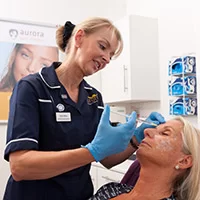The news is finally out. Botox maker Allergan and US drug giant Pfizer have announced they are to merge in a deal worth a staggering $160 billion.
 The merger between the two former rivals creates a new pharmaceutical ‘supercompany’ which is set to be officially the world’s largest pharmaceutical company by sales.
The merger between the two former rivals creates a new pharmaceutical ‘supercompany’ which is set to be officially the world’s largest pharmaceutical company by sales.
There had long been talk about an Allergan buyout. Indeed, on our blog last year, we covered the unsuccessful takeover bid made by Valeant.
Now this new deal secures the long-term future of the company, and ushers in exciting new possibilities to research, discover and deliver more medicines and therapies.
The future for Allergan
The new company has a combined pipeline of more than 100 mid-to-late stage programmes currently in development.
And with dramatically increased resources to invest in R&D and manufacturing in future, we’re likely to see some incredible innovations in the cosmetic industry in the not-too-distant future.
As Brent Saunders, Chief Executive Officer of Allergan, says:
“The combination of Allergan and Pfizer is a highly strategic, value-enhancing transaction that brings together two biopharma powerhouses to change lives for the better. This bold action is the next chapter in the successful transformation of Allergan allowing us to operate with greater resources at a much bigger scale. Joining forces with Pfizer matches our leading products in seven high growth therapeutic areas and our robust R&D pipeline with Pfizer’s leading innovative and established businesses, vast global footprint and strength in discovery and development research to create a new biopharma leader.”
What does it mean for you?
This soon after the event, it’s difficult to say what – if any – impact the merger will have on you and your business in the coming months.
But at Cosmetic Courses, we have a great relationship with Allergan and are in frequent close contact. As soon as we know about any changes that are likely to affect you, we’ll of course be sure to let you know as soon as we can. So do keep an eye out on our blog, newsletters and social media channels.
For the time being, it’s business as usual – albeit with some exciting new possibilities on the horizon.

 Despite its popularity and widespread use, some people are still unconvinced about the safety of Botox. They believe that, because it’s a toxin, it has the potential to be harmful when injected.
Despite its popularity and widespread use, some people are still unconvinced about the safety of Botox. They believe that, because it’s a toxin, it has the potential to be harmful when injected. 






